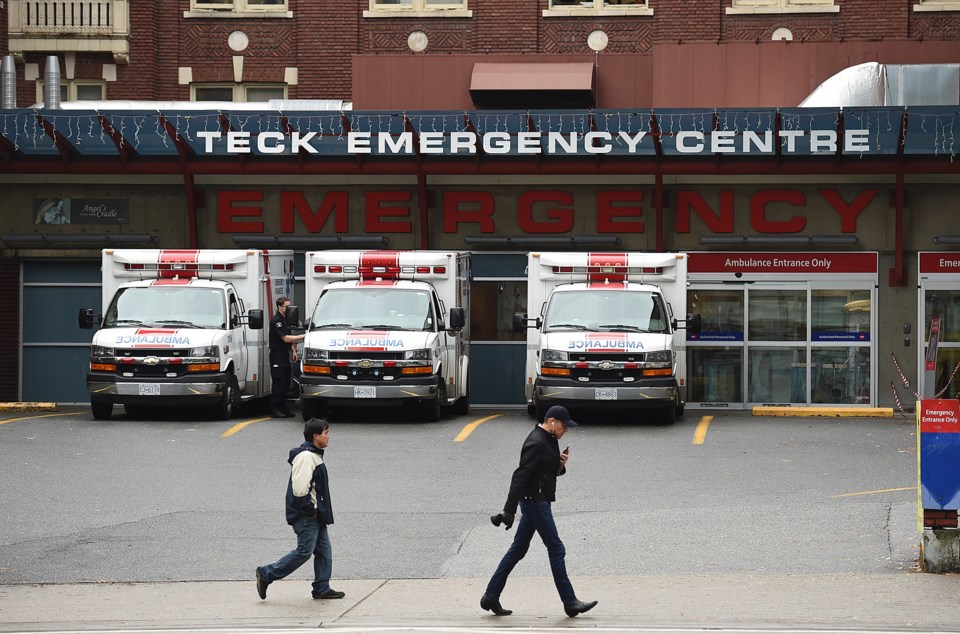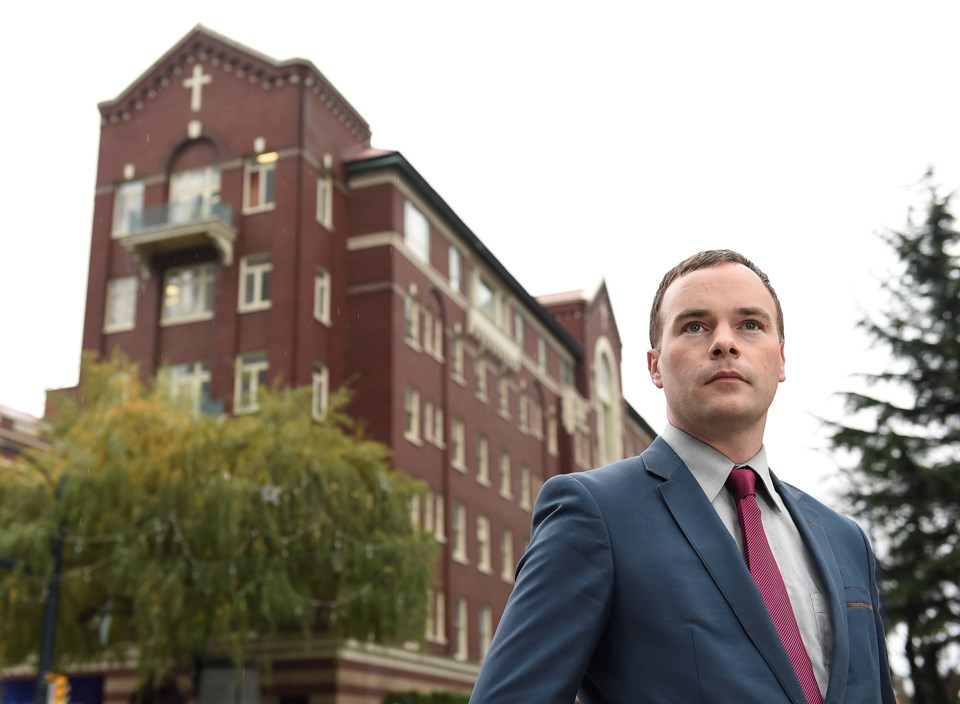With Providence Health Care’s announcement earlier this year that St. Paul’s Hospital will be closing and moving to False Creek Flats, the focus, understandably, has been directed on the new facility. The new St. Paul’s promises to be a world-class campus of integrated healthcare incorporating the latest technology, spanning 18.5 acres right in the middle of the city.
But as the wheels begin turning on one of the most important infrastructure projects in the city’s history, the question remains as to what will happen to the neighbourhood St. Paul’s leaves behind.
“It’s a bold move to build a billion-dollar-plus world class campus of care, but it brings into play, what’s going to be there next?” asks Stephen Regan, executive director of the West End Business Improvement Association.
For more than 120 years, St. Paul’s has called the West End home. Founded in 1894 by nuns of the Sisters of Providence, the hospital has long been the neighbourhood’s biggest employer, and the centre of daily life.
If the West End has a beating heart, it’s St. Paul’s Hospital, says Regan.
“The West End will be a very different place without it.”
However, what will take its place along Burrard Street has so far yet to be determined.

Providence Health Care hopes to raise more than $500 million from the sale and redevelopment of the St. Paul’s site to help finance the billion-dollar-plus price tag it’s splitting with province for the new hospital. The 6.5 acres of land St. Paul’s currently comprises will no doubt fetch a pretty penny: last year, a whopping $83.5 million was paid for a site measuring less than an acre on nearby Alberni Street.
So, will St. Paul’s be flattened to make way for shiny new condos? Will there be any health services on site? Will there be a commercial component to the redevelopment, to provide jobs and stimulate the local economy?
Providence Health Care spokesperson Shaf Hussain told Westender it’s still very early in the process and that no decisions have yet been made about the future of the St. Paul’s site. However, public input will be included every step of the way, he insists.
“It’s all yet to be determined, but decisions won’t be made in a vacuum,” he said.
However, West End NDP MLA Spencer Chandra Herbert says he was caught off guard by Providence’s announcement to move the hospital, as were many in the community.
In 2010, Providence announced a plan to spend more than $500 million to rehabilitate and renovate St. Paul’s Hospital at its current site, funded largely by the provincial Ministry of Health.
“In 2010, they said they were going to rebuild on site, and we got excited about it!” says Chandra Herbert.
Demolition of the obsolete Comox Building and Power House was scheduled to begin in 2013, with the new ambulatory care building completed by 2018.
The recently completed West End Community Plan, which was intended to shape the development and evolution of the neighbourhood for decades to come, was created under the assumption that St. Paul’s would be redeveloped on site. That document, and all the planning that went into it, is now largely obsolete, Chandra Herbert notes.
Given the broken promises regarding the future of St. Paul’s, Chandra Herbert said many in the community are taking Providence’s plans with a grain of salt.
“For many, I think there’s an attitude of, ‘I’ll believe it when I see it’,” he says. “But by then it might be too late.”
Chandra Herbert says his chief concern is the retention of healthcare services for his constituents. The fact that it’s now six months since the announcement of the move and the community still hasn’t been consulted about its healthcare needs has him concerned.
“This is a community with a rapidly growing, rapidly aging population,” said Chandra Herbert. “What are they going to leave for us?”
Access to the new hospital is also an issue, given only 28 per cent of West End residents own a car.
“Most of us don’t drive here, so moving the hospital a couple kilometres away is a big deal,” says Chandra Herbert.
Further hindering access to the new hospital, he notes, is the fact that in February, the province closed down and sold off the Richards Street ambulance station which served the West End, as well as the City of Vancouver’s plan to tear down the Georgia and Dunsmuir viaducts.
“Many seniors don’t have a family doctor. They don’t have a car. What do they do in an emergency?” said Chandra Herbert. “I’m trying to be pragmatic. I’m not against a hospital somewhere else, but we’re not getting a lot back from government on what we need.”
Hussain said that he understands that people want answers right away, but the vision for the Burrard Street site will take time. In the coming months and years, Providence, as well as Vancouver Coastal Health and the provincial Ministry of Health will be working together to determine the healthcare needs of the community, and how those services can be administered.
“It all has to be evidence- and data-based. We have to take into account home care services, what the population will be in 2030 and beyond, and what services will be needed to meet future demands,” said Hussain. “That process is just starting.”
He added that residents will soon be invited to take part in open community forums and workshops to help determine the future of the St. Paul’s site, although no exact dates for any such events have been set.
One healthcare option that might be considered for the redeveloped St. Paul’s site is an urgent care centre, which would provide 24/7 service for patients with less serious conditions. Currently 22 per cent of St. Paul’s ER visits are made by West End residents, but many of those don’t need to be admitted to hospital.
“You can’t just have a standalone ER without a hospital attached to it,” said Hussain. “But an urgent care centre is different. Forty-four per cent going to the ER are [low-priority], so maybe a 24/7 primary care clinic is an option.
“These are the kinds of things we are open to.”
Chandra Herbert said he’s open to the idea of alternative care models, as are many in the community.
“I’ve never been allergic to the idea of other health [options],” he said. “If you can show me healthcare outcomes will be better for my constituents, then that’s something [I can support].”
For many of the businesses that have grown up around St. Paul’s Hospital, the move could have catastrophic economic impacts. Regan describes the businesses that have clustered themselves around St. Paul’s in the past century as an economic “ecosystem”, containing everything from medical imaging labs to florists to restaurants and hotels.
“There are many businesses and organizations that depend on St. Paul’s, what happens to them? These are the unknowns,” says Regan. “The effect is probably slightly negative for the West End, but it depends on what goes into that site. But we still don’t have all the facts.”
With the completion of the new St. Paul’s close to a decade away, Regan said not only is there uncertainty how the project will take shape, but whether it will come to fruition at all.
“With a change of government, there could be a rethinking of the plan,” says Regan. “Then there’s the real estate market. And we don’t control any of that. We’re just watching from the sidelines now.”
While the previous redevelopment plan for St. Paul’s may have caused less disruption for the West End, Hussain is adamant that the new hospital will provide a greater benefit for Vancouverites.
“We looked at [the 2010 St. Paul’s redevelopment plan] and asked ourselves, what could we do with that money?” Hussain said. “We could spend $850 million on St. Paul’s and it still wouldn’t get us good care due to site constraints. As a world-class campus of care, we can offer much better care. We can add adjacent [organizations]. We can bring in more resources.
“This is a once-in-a-lifetime opportunity.”



